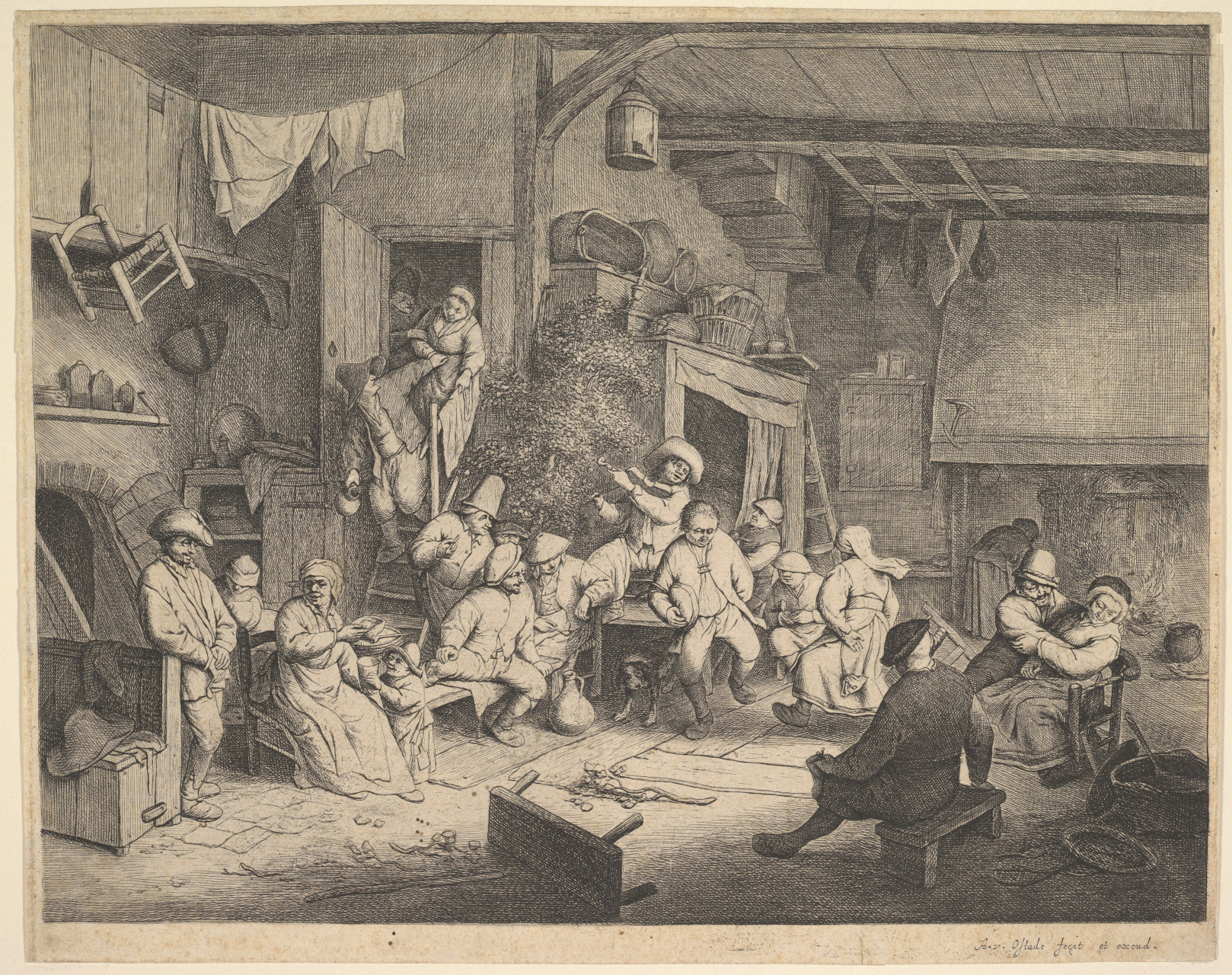Until just 500 years ago, common people were a rare sight in the art of Europe. Up through the Middle Ages, almost all professional art on the continent relied on wealthy patrons. The works they commissioned tended to promote themselves, great battles, and religious subjects. While peasant scenes sometimes appeared in manuscripts, they were far from a high priority. Peasants created other kinds of art, often beautifully, but most lacked the resources to make or preserve illustrations.
This tradition only changed around the 16th century, when printmaking hit the scene. A similar type of printing press had been invented in China nearly a thousand years earlier. Europe’s printing revolution, however, began with the movable-type press of Johannes Gutenberg in the 1440s.
The printing press made it possible to spread new ideas, such as the Protestant Reformation, more cheaply and rapidly than ever before. It also revolutionized the world of art. Before the press, skilled hands produced every copy of a manuscript or painting. Each book and piece of art in existence represented a major investment of labor and education. Most people didn’t learn to read because written words were rare and costly.
Then, almost overnight, a single printmaker could create dozens of near-perfect paper copies in just a few hours. Literacy rose as literature flooded cities and villages. The press opened up a massive new market to common people, already hungry for access to art, knowledge, and news of the world. All of a sudden, catering to the average person could be profitable.
Many of the early printmakers lived near the original home of the printing press, in German states, the Netherlands, and Italy. Among them were famous names like Albrecht Dürer, Hans Baldung, Lucas van Leyden, Hendrik Goltzius, and Pieter Bruegel (both Elder and Younger). Their engravings covered all kinds of subjects, but they are notable for giving us detailed glimpses into the lives and deaths of average people like never before. The peasants working, wedding, relaxing, and dying all around them became artistic subjects as well as an art-consuming middle class.
These 16th-century prints from Europe offer key insights into what people ate, how they behaved in public, and how the upper classes perceived them (often with increasing anxiety). Some of the more interesting activities captured by these prints are the folk dances of the day. Dance flourished at this time among all classes. As formal dance styles like ballet grew more popular in noble courts, the common people followed their own dances for courtship and pleasure. Many of the most popular folk dances practiced today were developed and refined during this period, including the waltz.
What is the real value of these prints, especially to non-historians? It may be their simple reminder that the people of centuries past were not always sitting stiff-necked for formal portraits. They knew how to relax, have fun together, and act a little silly, even in times of great turmoil. They could even have their more embarrassing moments immortalized for centuries to follow. How much has really changed?
Further Reading:
Silver, Larry. Peasant Scenes and Landscapes: the Rise of Pictorial Genres in the Antwerp Art Market. University of Pennsylvania Press, 2012.
Wheelock, Arthur K., and Adele Seeff, editors. The Public and Private in Dutch Culture of the Golden Age. University of Delaware Press, 2000.
About TOTA
TOTA.world provides cultural information and sharing across the world to help you explore your Family’s Cultural History and create deep connections with the lives and cultures of your ancestors.







